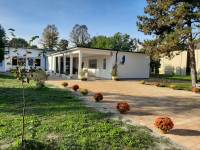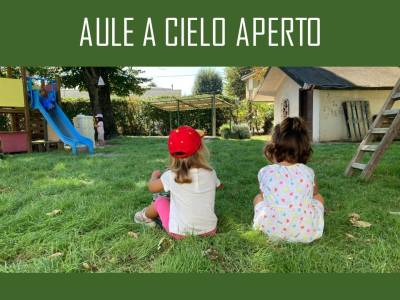The school has been renovated and expanded in accordance with current regulations regarding school buildings. Each year, the structure of the spaces and times of the educational day are the subject of reflection and redesign by teachers through discussions within the teaching staff and the use of context assessment tools.
Indoor and outdoor spaces, furnishings,
the choice and arrangement of materials guide adults
and children and facilitate the acquisition of positive social/civic behaviors, exploration, discovery,
play, collaborative activities, concentration, and intimacy.
Pedagogical Guidelines 06
Starting from the understanding that children are responsible for their own growth through constant interaction with their environment, and that the learning process is more effective the more they are free to choose and act in an environment carefully designed for them, following a spatial remodeling process that began in 2024, the spaces have been transformed and given a strong sense of purpose. The children continue to have their primary and reassuring reference point in their section group, with whom they can inhabit the different spaces depending on the type of "depth" they wish to give to their experiences. (For example: the reunion of a hedgehog born in the garden can be graphically reworked in the art space, and explored through readings in the language space.) One day a week, the children can choose which space to inhabit, thus having the opportunity to satisfy their individual needs for exploration, develop their talents, derive satisfaction from their experiences, and develop the awareness of being able to "choose," a fundamental skill in human development. A panel on the back of the lockers, to the left of the entrance, "regulates" the explorers' movements.
All spaces are also accessible to nursery school children and their teachers for meaningful shared experiences.
TIMES
The school is open from September to June 30th on weekdays from Monday to Friday, excluding religious and civil holidays recognized by law.
The school is open from 8:00 am to 4:00 pm.
Before-school care (7:30 am to 8:00 am) and after-school care (4:00 pm to 4:30 pm) are always available.
Upon registration, and if the number of requests warrants, after-school care is available until 6:00 pm.
Schedule of the days
ENTRY TIMES:
7:30 a.m. to 8:00 a.m. before school (for those enrolled)
8:00 a.m. to 9:00 a.m. admission
EXIT TIMES

